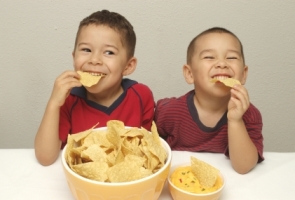 The beginning of the year marked a turning point for schools in Mexico. In order to fight childhood obesity, a soda ban and new food guidelines were put into place. Unfortunately, the new food rules are proving to be too relaxed for the taste of some officials.
The beginning of the year marked a turning point for schools in Mexico. In order to fight childhood obesity, a soda ban and new food guidelines were put into place. Unfortunately, the new food rules are proving to be too relaxed for the taste of some officials.
Mexico is among the most obese countries in the world and children are far from exempt in these statistics. To put it into numbers, one out of every three children in Mexico is overweight.
Schools in Mexico do not provide school lunches, but food and snacks are sold at recess. After long and painful negotiations with junk food moguls, officials stepped in to mandate what type of foods are allowed to be sold. Although considerable improvements were made, there is still a great need for change. Chips, candy and cookies continue to be readily available for children to purchase during school hours. After school, the situation worsens beyond the reach of the newly-set standards. Vendors eagerly wait outside for the throng of students to come pouring out. Nachos, ice cream and various confections tempt the children after a long day in class.
Besides the fact that junk food is still available on school grounds, portion sizes are limited, as well as sugar content. The chips (at the school, not necessarily at the vendors outside) are baked instead of fried and the soft drink ban is holding strong. It’s easy to judge and say that too many special interests played a role in these regulations and that they need to be more strict but Dr. José Angel Córdova, Mexico’s health minister said, “We managed to do the most important things, which was to pull out the soft drinks and to get the composition of foods changed.” Nearly 90 percent of the fried food options were removed and as Education Minister Alonso Lujambio said, “That is a very aggressive change.”
All of these new rules are on the right track but a large number of health and education officials want to see more progress.
